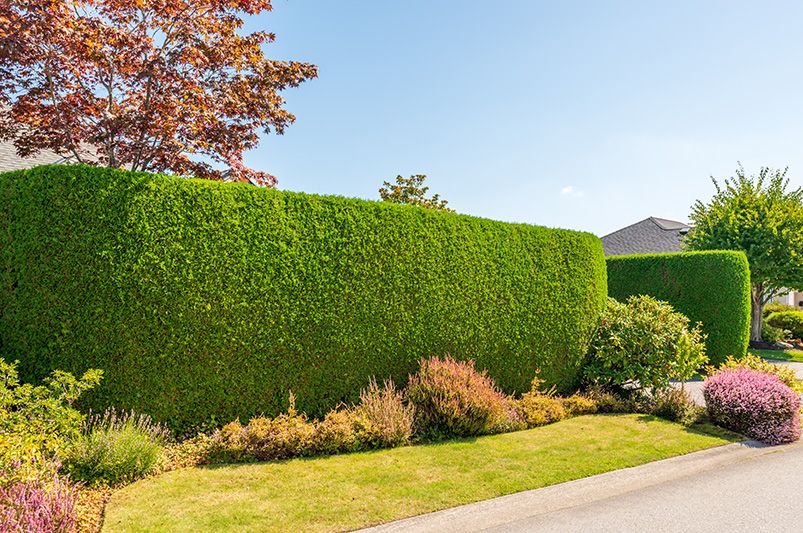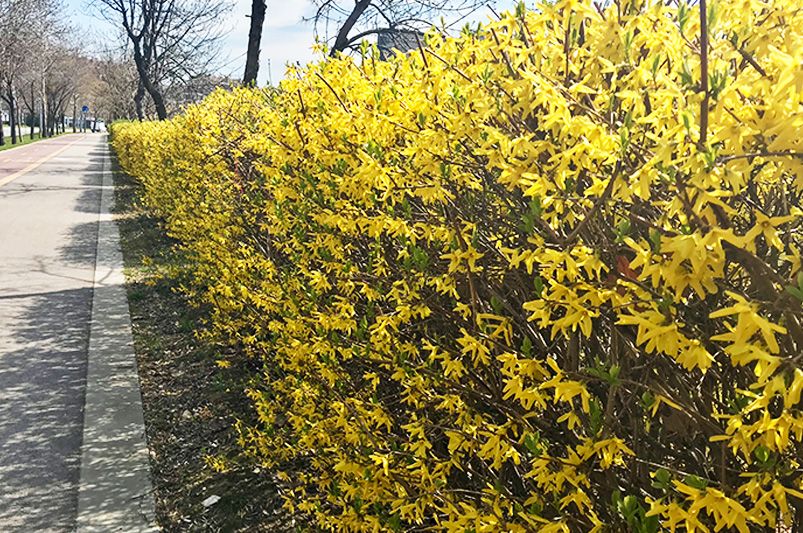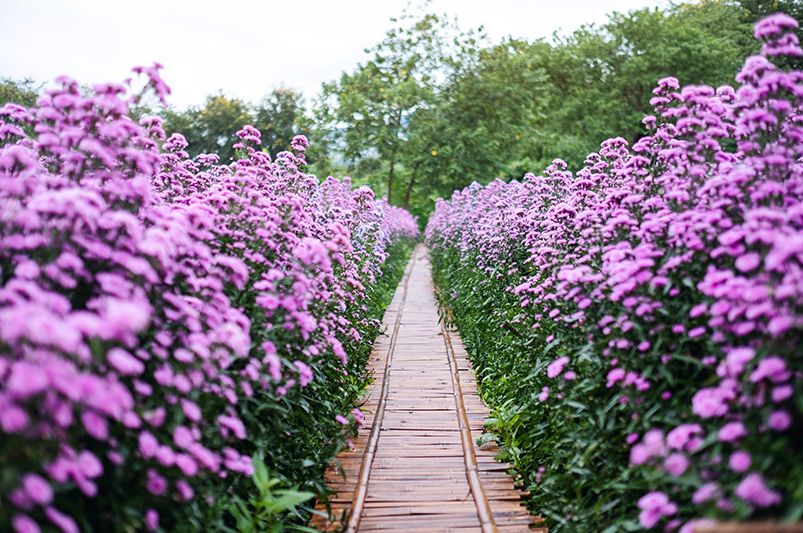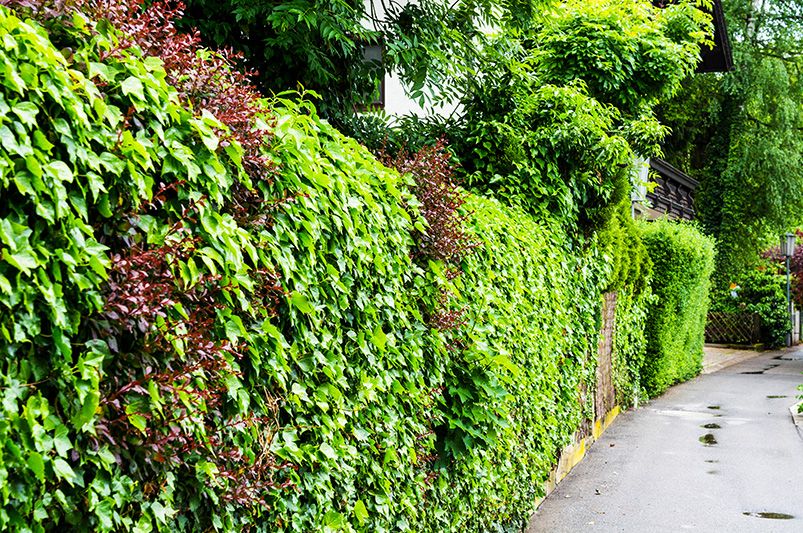
Living Fences & Bio-Hedges: Transforming Boundaries into Eco-Friendly Gardens
Published: 06/11/2025 | Updated: 18/12/2025
Imagine a boundary that not only defines your property but also breathes life into it — a vibrant green wall that hums with pollinators, shelters songbirds, and ripples with seasonal color. That’s the magic of living fences and bio-hedges: natural privacy solutions that transform static borders into thriving ecosystems.


Unlike wood, metal, or vinyl barriers that separate us from nature, living fences create harmony between structure and sustainability. These multifunctional hedgerows enrich your landscape’s biodiversity while offering beauty, privacy, and long-term ecological benefits.
The Multifaceted Benefits of Living Fences
Living fences do far more than mark boundaries — they redefine them.
1. Natural Privacy and Security
Dense plantings such as hawthorn, privet, or holly can form thick, lush barriers that block unwanted views while softening your yard’s visual edges. For homeowners concerned with security, species like rose or honey locust, known for their thorny defenses, add a natural deterrent.
Example: A row of Rugosa roses provides stunning summer blooms and dense, thorny stems — beauty and protection in one.
2. Eco-Friendly Functionality
A living fence is a habitat in itself. From butterflies to nesting birds, hedgerows invite biodiversity to your property. They filter dust, sequester carbon, and create microclimates that support healthy soil ecosystems.
Example: The hazelnut shrub serves double duty — producing edible nuts for you and offering shelter and food for wildlife.
3. Year-Round Beauty
By combining evergreen and deciduous plants, you can create a dynamic screen that shifts with the seasons — evergreen structure in winter, flowering accents in spring, and colorful foliage in fall.
Example: Pairing boxwood with hydrangeas creates a balance of structure and seasonal color.

Sustainability and Longevity
The real beauty of living fences lies in their self-sustaining nature. Once established, they can last for generations — growing stronger and more integrated with your landscape over time.
1. Reduced Environmental Impact
Unlike vinyl or treated lumber, living fences use no synthetic materials and require minimal resources to maintain. They purify the air, enrich the soil, and reduce runoff — a perfect embodiment of sustainable landscape design.
2. Long-Lasting Green Infrastructure
A well-maintained bio-hedge can live for decades, sometimes even a century. Native species in particular tend to thrive with little intervention once adapted to their site.
Example: An elderberry hedge produces fragrant flowers and antioxidant-rich berries while serving as a pollinator magnet — beauty, function, and longevity in one.
3. Practical Sustainability Checklist
-
Choose resilient species: Opt for native, disease-resistant plants.
-
Incorporate nitrogen-fixers: Plants like autumn olive improve soil health naturally.
-
Commit to light annual pruning: Keeps growth dense and healthy.
-
Let nature do the work: Compost fallen leaves as natural mulch.

Climate and Species Selection
Success with living fences begins with choosing the right plants for your climate and goals.
1. Match Plants to Your Region
Each region has species that thrive under its unique conditions.
-
Temperate zones: Willow, hazelnut, and lilac provide lush coverage.
-
Arid regions: Cactus, oleander, or bottlebrush offer drought tolerance.
-
Humid subtropics: Camellia, viburnum, and privet deliver thick, evergreen privacy.
Example: In the American South, a combination of Chinese privet and climbing roses creates a fragrant, fast-growing hedge that’s both decorative and protective.
2. Dual-Purpose Plants
Why settle for one function when your living fence can provide food, fragrance, and color?
-
For edible harvests: Try blueberries, currants, or pomegranates.
-
For pollinators: Include lavender, salvia, or butterfly bush.
-
For texture and form: Mix in ornamental grasses or ferns.
3. Consult Local Experts
Garden centers, cooperative extensions, and landscape designers familiar with sustainable landscape design can help you match native plants to your soil type, light conditions, and water availability.

Overcoming Common Challenges
While living fences are resilient, they do require early care and planning. Here’s how to ensure success from day one.
1. Myth: They’re Too High-Maintenance
In reality, once established, living fences often need less upkeep than lawns or flowerbeds. Early pruning and mulching go a long way toward easy long-term management.
2. Managing Wildlife Wisely
A living fence invites life — but not all wildlife is welcome. Choose plants that attract beneficial insects and birds while discouraging pests.
Example: A dense blackberry hedge provides shelter for small birds while its thorns naturally deter larger animals from entering.
3. Planning for Growth
Newly planted hedges may seem sparse, but they’ll fill in quickly. Consider mature plant size when spacing and design your layout with growth in mind to avoid overcrowding.
How to Get Started: Your Living Fence Blueprint
-
Define Your Goal: Privacy, habitat, beauty, or all three?
-
Select the Right Species: Favor native, hardy, and multi-purpose plants.
-
Prepare the Soil: Loosen compacted soil and enrich with compost.
-
Plan for Layering: Combine shrubs, perennials, and vines for depth.
-
Maintain Consistently: Annual pruning and mulching keep growth healthy and dense.
Ecological Benefits of Hedgerows
Hedgerows do more than beautify your yard — they play a critical role in restoring ecological balance.
-
Wildlife Corridors: They connect fragmented habitats, allowing species to migrate safely.
-
Pollinator Pathways: Bees, butterflies, and hummingbirds rely on flowering hedges as feeding stops.
-
Erosion Control: Deep root systems stabilize soil and prevent runoff.
-
Carbon Sequestration: Plants absorb CO₂, improving air quality and mitigating climate effects.

Reimagine Your Boundary
A living fence is more than a landscaping choice — it’s a philosophy. It’s a decision to work with nature rather than against it. With each plant you add, you’re shaping a self-sustaining, life-giving border that nurtures both your property and the planet.
Whether you’re creating a sanctuary for pollinators or simply seeking a more natural privacy solution, living fences are a testament to how sustainability and beauty can coexist seamlessly.
The Living Fence Starter Guide – Design, Plant, and Maintain a Natural Privacy Barrier
Learn the step-by-step process for planning, planting, and maintaining your own living fence. This free guide from ShrubHub covers species selection, spacing layouts, pruning schedules, and soil health strategies — helping you grow a fence that lasts for generations.
Download your free living fence starter guide.
Ready to turn your boundary into a garden masterpiece?
Start Your Online Landscape Design Today with ShrubHub — and let our experts create a personalized plan that blends privacy, beauty, and ecological harmony.
FAQs
1. What’s the difference between a living fence and a traditional hedge?
A living fence is designed with multi-species diversity and ecological benefits in mind, while traditional hedges typically focus on uniform appearance and privacy.
2. How long does it take for a living fence to grow in fully?
Depending on species, most living fences take 2–5 years to reach full density. Fast-growing species like privet or willow can fill in within two seasons.
3. Are living fences suitable for small yards?
Absolutely! Compact species such as boxwood, lavender, or dwarf holly can form mini bio-hedges perfect for limited spaces.
4. Do living fences attract pests?
They can attract insects, but when properly planned with companion plants, the ecosystem balances itself naturally, reducing pest issues over time.
5. What’s the best time to plant a living fence?
Early spring or fall are ideal times, giving roots a chance to establish before extreme weather hits.


